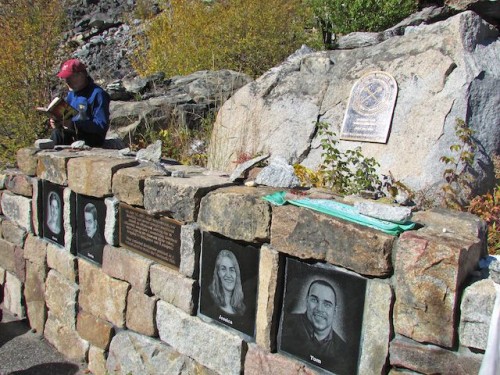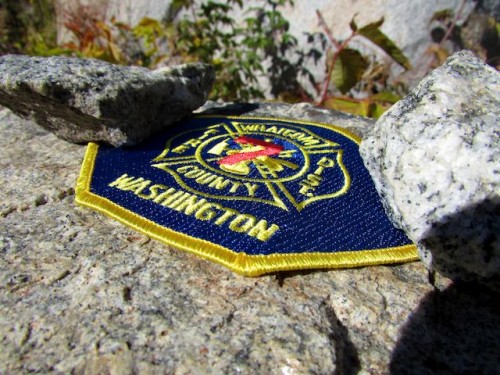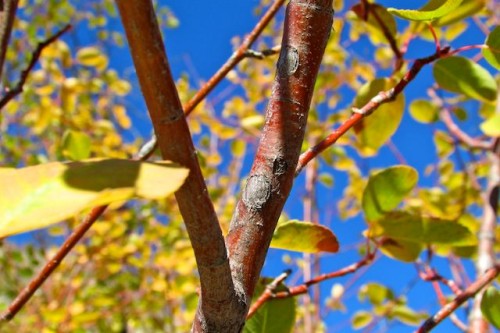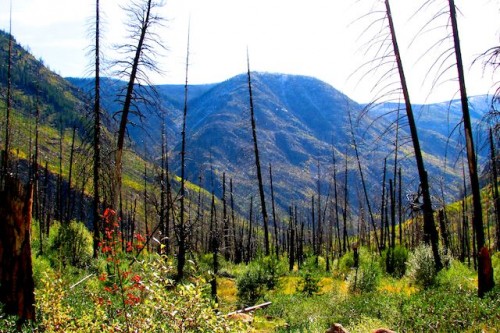The Gifts of Prometheus : the natural and social dimensions of fire ecology

Terror surged silently through my viscera as I watched the swirling inferno twist red and merciless up the talus in the smoke-blackened darkness of night.
Trapped on a rocky, steep slope in a canyon without exit; that is how I would have perished had I been forced to make the same decision faced by five wildland firefighters in 2001. I had to control my breathing and disconnect myself from the story being read by our professor, Dr. John Miles, at the Thirtymile Fire Memorial up the Chewuch River Valley in Okanogan National Forest. Four of the five firefighters lost their lives in ways I dared not ponder while fleeing a storm of fire fueled by high temperatures, low humidity, and extreme drought. At the memorial, their faces stared smiling and youthful from the stone wall adorned with emblems, mementos and the remnants of weathered paper notes tucked under rocks of granite.
As graduate students, we were on our annual Fall Natural History Retreat, and this year found us traveling east to the Methow Valley to study both the natural and social dimensions of fire ecology. Before reading from John Maclean’s book, The Thirtymile Fire, Dr. Miles asked us what we would have done: taken cover in the stream or climbed high into the rocks? I chose the rocks, thinking that I would have been able to find a hole with enough depth in which to take refuge and preserve my life. I would have been wrong.
 A patch from Whatcom County firefighters at the memorial site, weighted by two chunks of granite.
A patch from Whatcom County firefighters at the memorial site, weighted by two chunks of granite.
Fire: Prometheus’ great offering to humankind. Stolen from the gods and placed in our fragile hands of flesh and bone. Who knew what a frenemy we would find in the gift for which he paid such an eternal price? Our fear and fascination have persisted throughout time immemorial. Yet finding a balance between protection of property and fire’s greater purpose still mires our management practices.
Thirtymile exemplified a forest fire’s ability to be both a harbinger of deadly destruction and one of cleansing renewal. Charcoal and bone, the remnants of a once verdant forest protruded like skeletal fingers from the earth. The valley itself, however, was smeared with lime, gold, burgundy, rust and canary. Nature’s intrinsic instrumentation was evident. Fire swept away the abundant, dry understory. It ridded the land of pests and pestilence such as mountain pine beetle and laminated root rot. It held the key to unlock the serotinous cones of the lodgepole pine.
Then, from the ash, came Nature’s healers: lupine, fireweed and alder to fix nitrogen back into the soil and make way for the forest’s rebirth. The earth erupted in a symphony of color, drawing butterflies and hummingbirds. Dead tree trunks provided homes for invertebrates that became tasty snacks for woodpeckers and sapsuckers. Aspen, wild rose and other sun-loving species burst from the desolation, and among them began growing stout little conifers to begin the forest anew.
 Regeneration after fire: Aspen trees come in to a disturbed ecosystem early on and help fix nitrogen for the rest of the plant community, as well as offer important browse food for animals.
Regeneration after fire: Aspen trees come in to a disturbed ecosystem early on and help fix nitrogen for the rest of the plant community, as well as offer important browse food for animals.
As perfectly orchestrated and miraculously planned as this process may seem, human beings still prioritize the protection of property and man-made structures over the long-term ecological health of a landscape. Additionally, the suppression of fire allows fuels to accumulate until drought and wind create perfect conditions for a mega-inferno, an event that is only ever one lightning strike or careless campfire away. The latter is what happened at Thirtymile with devastating consequences.
Despite my mini-sermon on the importance of allowing fire to happen naturally, I would not want my country homestead or vacation cottage to be burned to the ground. A fire on Sourdough Ridge this past summer threatened the Environmental Learning Center and, potentially, my own home in Diablo. I live in a national park, and fire, flood, avalanche and rock slide are all realities in this wild and beautiful place. Embracing that risk does not mean I would not be gutted if my modest accumulation of belongings was lost and I had no where to live.
The questions for land managers remain: How do we balance the ecological benefits of fire with protecting personal property? To what degree are we willing to put lives at risk to suppress fire while creating the opportunity for an uncontrollable and annihilating fire event? Can we accept loss of property from fire as a potential consequence of living near wild lands?
I find the cycle of ruin and rebirth from fire to be intensely beautiful. If Prometheus were able to free himself from eternal torment, his wish might be to bring people to once fire-charred lands to observe Nature’s own astonishing mechanisms. Perhaps then fire would be perceived as more of a friend than an enemy.
 The blackened snags of lodgepole pines (Pinus contorta) towering over baby trees and a carpet of bright green growth are testament to both the destructive and the invigorating qualities of fire.
The blackened snags of lodgepole pines (Pinus contorta) towering over baby trees and a carpet of bright green growth are testament to both the destructive and the invigorating qualities of fire.
Leading photo: Dr. John Miles, professor for the graduate students, reads aloud from John Maclean’s book, The Thirtymile Fire. All photos by Elissa Kobrin.
Elissa Kobrin is a graduate student in North Cascades Institute and Western Washington University’s M.Ed. program. She is a co-editor of Chattermarks. When not tracking down moose, she is keeping the world safe, one Band-aid at a time.


Very nice piece, Elissa. The Firefighter’s Memorial is indeed an inspiring place, and when we were there we could see the healing of the land, which you describe so well. Thank you.
The process of life, death and renewal, of wildfire and the green growth, is very well explained in your post — I like how you blend poetry with ecology and science. Beautiful photos too, make me want to visit this area too!